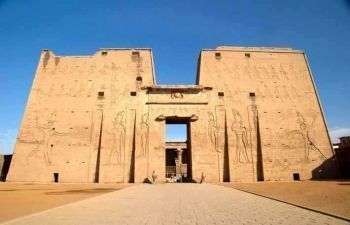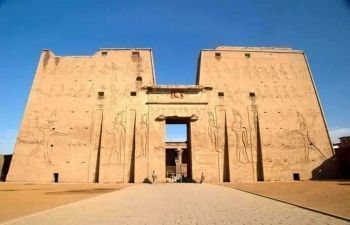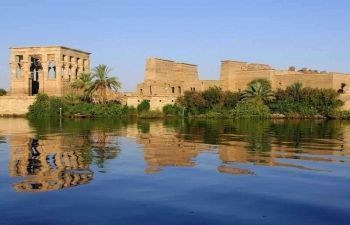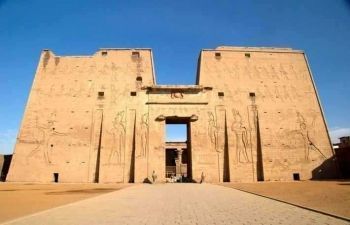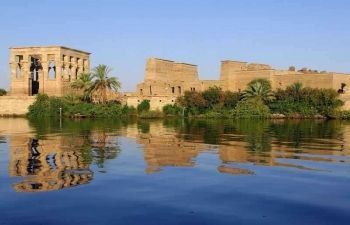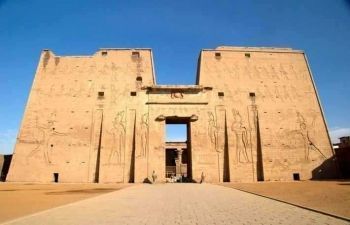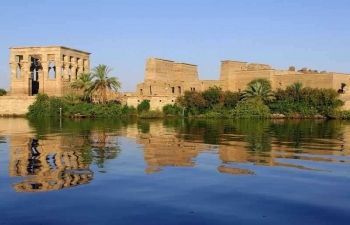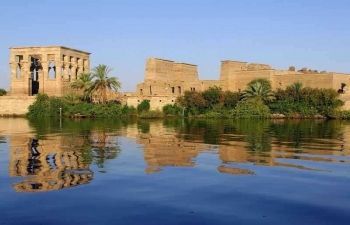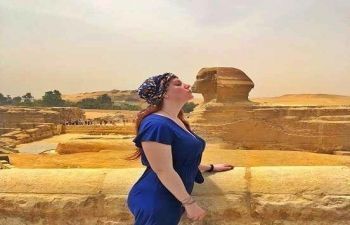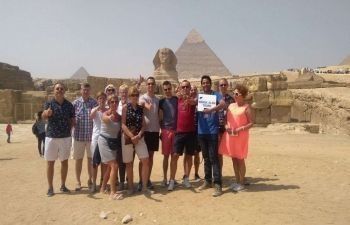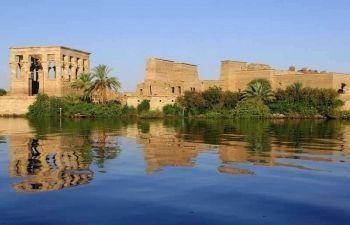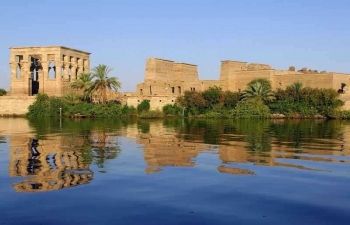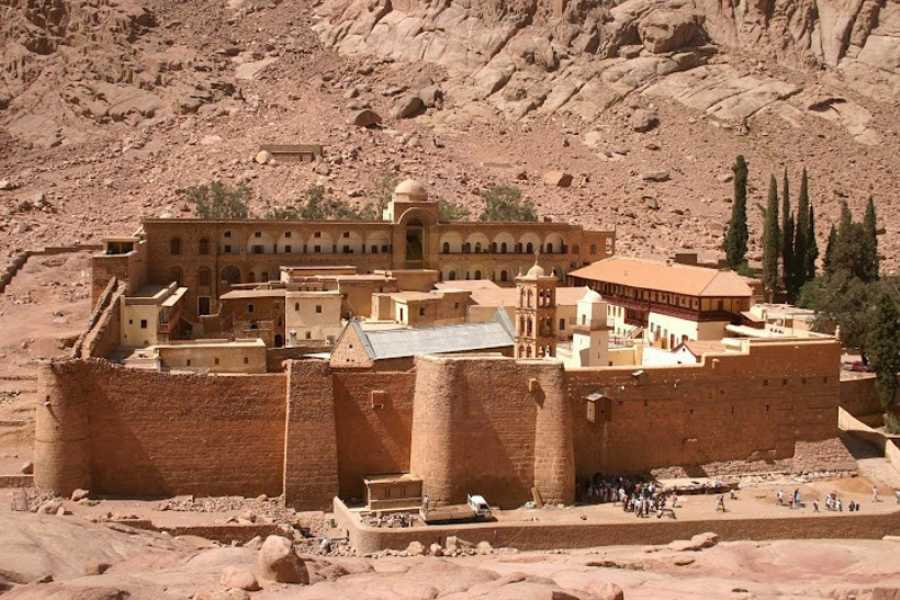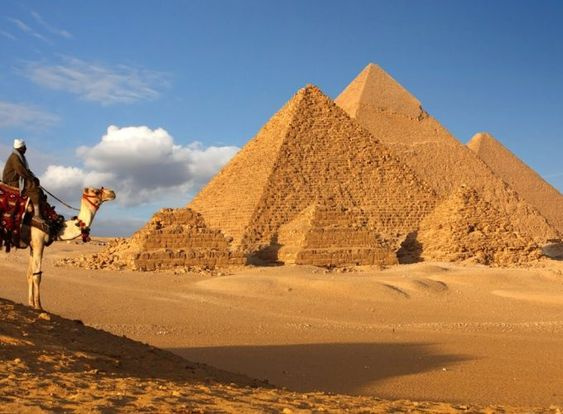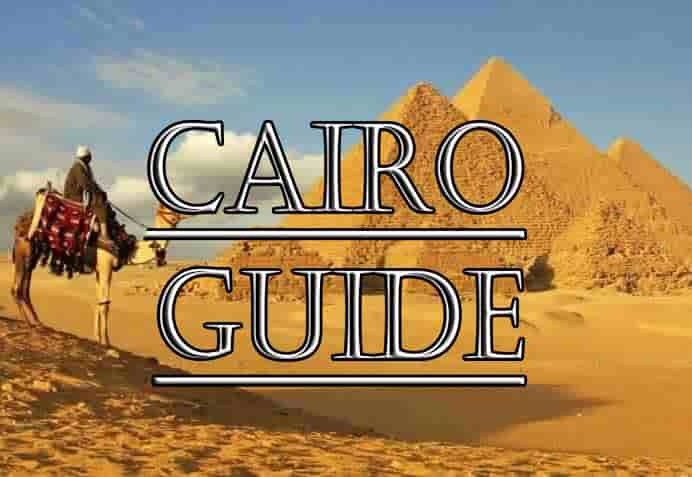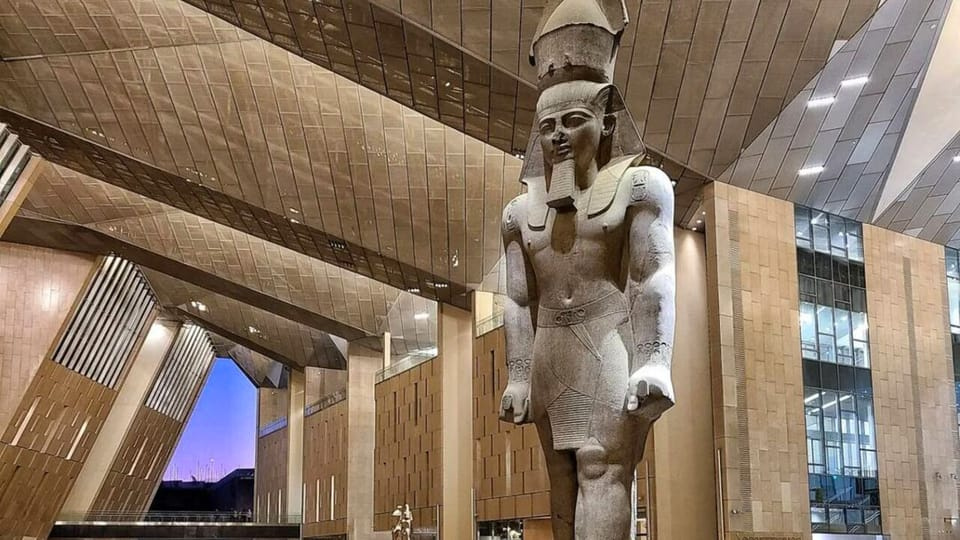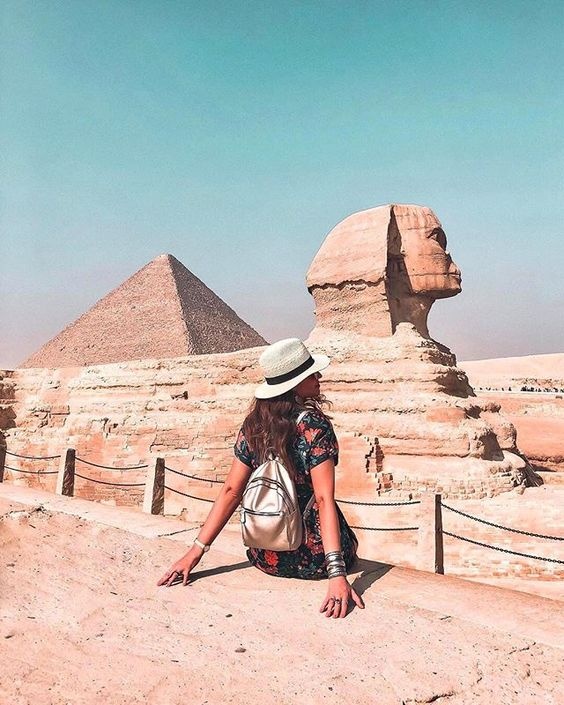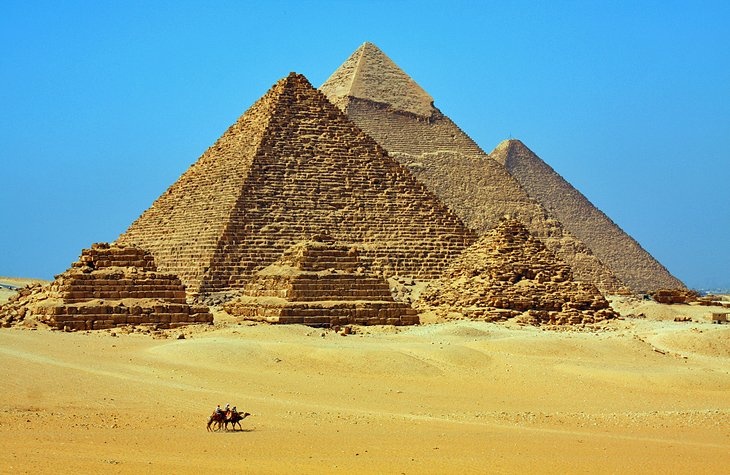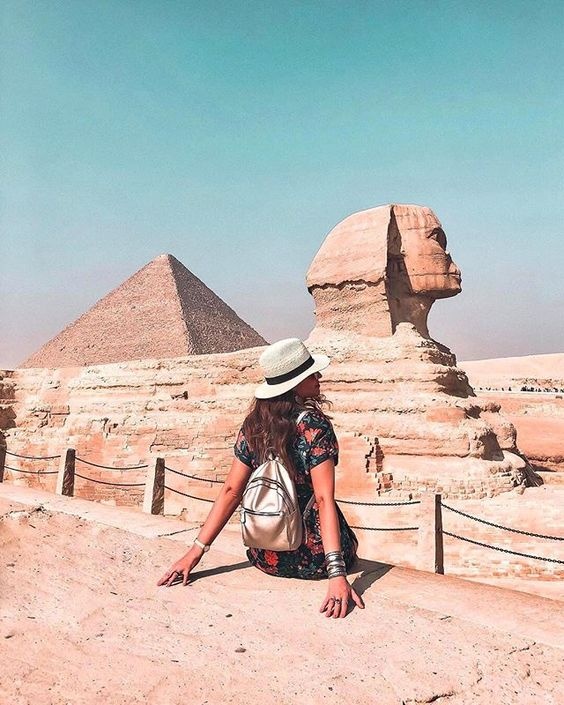Top10 Attractions in Cairo
No trip to Egypt is complete without Visit Cairo.the Capital of Egypt. Cairo is one of the world's great megacities. As beautiful as it is crazy, and as rich in historic finery as it is half dilapidated, Cairo tends to be a city that travellers love and hate in equal measures.
Top10 Attractions in Cairo
No trip to Egypt is complete without Visit Cairo.the Capital of Egypt. Cairo is one of the world's great megacities. As beautiful as it is crazy, and as rich in historic finery as it is half dilapidated, Cairo tends to be a city that travellers love and hate in equal measures.












1. PYRAMIDS OF GIZA
The Pyramids of Giza are Cairo's number one half-day trip and a must-do attraction on everyone's itinerary. Right on the edge of the city, on the Giza Plateau, these fourth dynasty funerary temples have been wowing travelers for centuries and continue to be one of the country's major highlights. Despite the heat, the dust, and the tourist hustle, you can't miss a trip here.
2. THE EGYPTIAN MUSEUM
The museum was founded in 1857 by French Egyptologist August Mariette and moved to its current home — in the distinctive powder-pink mansion in Downtown Cairo. The Egyptian Museum was founded in 1858 at Būlāq, moved to Al-Jīzah (Giza), and moved to its present site in 1897–1902. It is unique in its presentation of the whole history of Egyptian civilization, especially of antiquities of the Pharaonic and Greco-Roman periods. The more than 100,000 items in the museum include some 1,700 items from the tomb of Tutankhamen, including the solid-gold mask that covered the pharaoh’s head. Other treasures include reliefs, sarcophagi, papyri, funerary art and the contents of various tombs (including that of Queen Hetepheb hers), jewellery, ornaments of all kinds, and other objects... It also suffers currently with some empty cases due to artefacts having been transferred to the GEM, but you still can't help being impressed by the sheer majesty of the exhibits
3. SAQQARA
Saqqara was a Principal Necropolis of the Ancient City Memphisis located near the entrance of the Nile Delta, at the point where the river starts dividing into several arms, on the west bank of the Nile. Its first tombs, dated to the beginning of the 1st Dynasty, were built on the ridge of the desert plateau, probably immediately to the west of the new capital of Memphis.On a clear day, its most prominent monument, Netjerikhet’s Step Pyramid, can be seen from Giza, which lies some 17 kilometres to the North, and from Dashur, about 10 kilometres to the South. From Egypt’s modern-day capital, Cairo, Saqqara is located some 40 kilometres to the southwest.The main attraction in Saqqara is The Step Pyramid of King Djoser which is The earliest example of an Egyptian Pyramid, But Saqqara is home to Saqqara is home.You Can make day trip to Giza and Sakkara a day trip to Giza Plateau and Sakkara from Cairo or day trip to Saqqara
4. ANCIENT MEMPHIS EGYPT
The name of Memphis is derived from the Ancient Egyptian name called Min-Nefer, then Greeks called it latter Memphis. The Capital City of Egypt for most of the Pharaonic period.Nowadays it is a local village called Mit Rahina. It was founded in the 1st Dynasty (3100 B.C) by King Narmar, Memphis was the capital of Ancient Egypt, and the first capital city founded after the unification of Upper and Lower Egypt. It remained as the capital of Ancient Egypt throughout the Old Kingdom. Memphis was a centre for the worship of Ptah, god of creation and artworks, The creator god Ptah, his consort Sekhmet, and their son Nefertem, were the main focus of worship in the city which formed Memphis triad. The city of Memphis was the capital of ancient Egypt. It was the King’s residence and the political administrative center until around 2,200 BC.after unification for upper and lower Egypt.
DAHSHUR
Dahshur is located about 40 kilometers southwest of Cairo, the village of Dahshur marks the southern end of the vast pyramid field that begins at Giza. Excavations at Dahshur have revealed the remains of seven pyramids, as well as extensive tomb complexes built for queens and nobility from Memphis up until the 13th Dynasty in the Middle Kingdom.Dahshour is one of Memphis's most important cemeteries and is one of many vast necropoleis located in the great Ancient Egypt Capital. The Dahshour area contains pyramids of the IV and the XII Dynasties. Two of the later pyramids constructed here have been completely destroyed by time and the elements and several others, such as the Black Pyramid (12th Dynasty, 1929-1885 BC), are badly damaged, but Dahshur also boasts two of Egypt’s best-preserved early pyramids. Both built during the reign of King Sneferu (2613-2589 BC), the founder of the 4th Dynasty, the Bent Pyramid and the Red Pyramid at Dahshur are massive evidence of the architectural development that lead to the construction of the Great Pyramid and it companions at Giza.
6.CITADEL OF SALAH-AD-DIN
Cairo's citadel was built by Saladin in 1176. On the top of Mokattam Hills, it was built to defend the city against the Crusaders.The original structure he laid out has long disappeared except for the eastern outer walls, but a legacy of rulers has made their own additions here.The Mosque of Muhammad Ali is the most famous monument and the main reason for visiting. Nicknamed the "Alabaster Mosque," its white stone and tall, disproportionately slender minarets are one of Cairo's great landmarks. The other big reason to come up here are the views across the city; head to the Gawhara Terrace for the best panorama in town.
4. OLD CAIRO (COPTIC CAIRO)
Coptic Cairo is a unique area with Old Cairo that has a concentration of Christian churches and other sites that date from the centuries between the decline of the pharaonic religion and the arrival of Islam when Egypt had a Christian majority. Coptic Cairo is largely built around the fort of Babylon on upon the remains of its walls. For many Christian travellers though, the real highlight of a visit to this district is the Church of St. Sergius and Bacchus, where local legend says the Virgin Mary, baby Jesus, and family sheltered during King Herod's massacre of male babies. Farther into the quarter, you come to the Ben Ezra Synagogue, which is said to be built near the spot where the baby Moses was found in the reeds. Just outside the quarter, you can also visit the Mosque of Amr Ibn al-As; the first mosque built in Egypt.
8.SULTAN HASSAN MOSQUE
One of the finest examples of Mamluk architecture in the world, Sultan Hassan Mosque is a vision of Arabic artistry with an abundance of stalactite detailing and intricate arabesque features. It was built between 1356 and 1363 by Sultan Hassan, a grandson of Sultan Qalaun; he took the throne at the age of 13, was deposed and reinstated no less than three times, then assassinated shortly before the mosque was completed. Beyond the striking recessed entrance, a dark passage leads into a peaceful square courtyard surrounded by four soaring iwans (vaulted halls).
9. AL-MUIZZ LI-DIN ALLAH STREET
This one of the oldest streets in Cairo , the street has different fine Mamluk buildings, which have been painstakingly restored to their former glory. The Madrassa of as-Salih Ayyub, built in 1247, is a showcase of the tranquil simplicity of Islamic architecture. Al-Muizz street for short, is a major north-to-south street in the walled city of historic Cairo, Egypt. It is one of Cairo's oldest streets as it dates back to the foundation of the city (not counting the earlier Fustat) by the Fatimid dynasty in the 10th century, under their fourth caliph, Al-Mu'izz li-Din Allah (after whom the street is named). Historically, it was the most important artery of the city and was often referred to as the Qasaba (or Qasabah). It constituted the main axis of the city's economic zones where its souqs (markets) were concentrated
10. KHAN EL-KHALILI (SOUQ QUARTER)
Khan el-Khalili is one of the world's great shopping experiences. This Middle Eastern souq (bazaar) is a labyrinthine collection of skinny alleyways established as a shopping district in AD 1400, which still rings with the clang of metal workers and silversmiths. The main streets have long ago given themselves over completely to the tourist trade (with plenty of cheap papyrus pictures and plastic pyramids on display), but divert off the main drag into the surrounding alleyways, and the tiny stores and cluttered workshops are some of the best places to pick up traditional products in Egypt. Here, you'll find everything from antiques and gorgeous metal lampshades to locally woven textiles.
